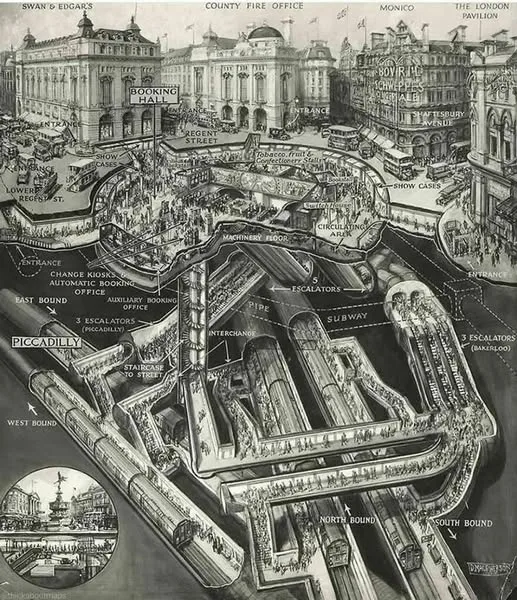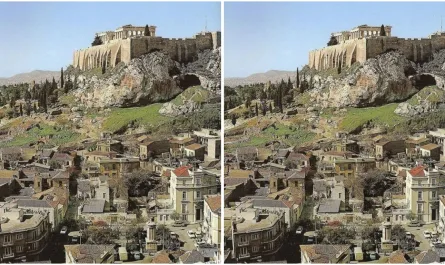Piccadilly Circus Station and Its Iconic Junction: A London Landmark
Nestled in the heart of London’s West End within the City of Westminster, Piccadilly Circus stands as a vibrant road junction and public space, seamlessly blending historical significance with modern urban life. Constructed in 1819 to connect Regent Street with Piccadilly, this bustling hub was designed by architect John Nash as part of a grand urban plan under the Prince Regent (later King George IV). Below this lively intersection lies Piccadilly Circus tube station, a key node on the London Underground, opened in 1906. Together, they form a dynamic centerpiece of the city, drawing millions annually and reflecting London’s evolution as of July 4, 2025.

Historical Context
Piccadilly Circus emerged from Nash’s vision to link the elegance of Regent Street with the established thoroughfare of Piccadilly, creating a commercial and social nexus. The name “Piccadilly” traces to the 17th century, derived from a tailor named Robert Baker who sold piccadills (stiff collars), amassing wealth to build a grand house in the area. By 1819, the circus—a term for a circular open space—became a focal point for entertainment and shopping, with the iconic Shaftesbury Memorial Fountain, erected in 1893 to honor the Earl of Shaftesbury, adding a sculptural landmark.
The tube station, part of the Bakerloo line’s initial opening on March 10, 1906, expanded with the Piccadilly line in 1907, cementing its role in London’s transport network. Designed by Leslie Green with his signature oxblood-red terracotta facade, it reflected the Edwardian era’s architectural flair, later modernized while retaining historical elements.
Design and Features
Piccadilly Circus Junction: The circular layout, though now partially altered by traffic needs, features five key roads—Regent Street, Piccadilly, Shaftesbury Avenue, Coventry Street, and Glasshouse Street—converging around the fountain, topped by the aluminum statue “Anteros” (often mistaken for Eros). The area is renowned for its neon billboards, a tradition since the 1920s, with the latest LED displays illuminating the night sky.
Piccadilly Tube Station: Located beneath the circus, the station serves the Bakerloo, Piccadilly, and Victoria lines, handling over 40 million passengers annually. Its deep-level platforms, reached by escalators, feature tiled walls with the distinctive Johnston typeface, while recent upgrades include step-free access completed in 2021. The station’s layout, with its bustling ticket halls and interconnecting passages, mirrors the chaos and charm above ground.
The junction’s evolution from a Georgian planning marvel to a modern transport hub highlights London’s adaptability, though traffic congestion and pedestrian overcrowding remain challenges.
Cultural and Historical Significance
Piccadilly Circus is a cultural heartbeat, synonymous with London’s theater district and shopping mecca. The Shaftesbury Memorial, with its winged figure, symbolizes Christian charity, while the surrounding area hosts landmarks like the Criterion Theatre and Lillywhites department store. The tube station, an engineering feat of its time, facilitated the city’s growth, connecting the West End to suburbs and fueling its status as a global city.
The station’s history includes wartime resilience—remaining operational during the Blitz—and cultural nods, like its appearance in films such as An American Werewolf in London. Its role in the 7 July 2005 bombings, though not directly hit, underscores its importance as a public space under scrutiny.
Preservation and Visitor Experience
Managed by Transport for London (TfL), Piccadilly Circus station undergoes regular maintenance, with 2025 seeing upgrades to escalators and lighting for safety and accessibility. The junction’s preservation balances heritage with modernity, with the fountain restored in 2019 and billboards updated to energy-efficient LEDs. Entry to the station is free with a valid Oyster card or contactless payment (£2.40–£6.60 depending on zones and time), open 24/7 with varying service hours (e.g., 5:00 AM–12:30 AM on the Piccadilly line).
Visitors on July 4, 2025, can enjoy the circus’s lively atmosphere, with street performers and holiday crowds, though summer heat and congestion are noted on X posts as drawbacks. Guided tours of the station’s historical tunnels, available seasonally, offer a deeper dive into its past.
Challenges and Future Prospects
The junction faces traffic gridlock and pedestrian safety issues, addressed by TfL’s 2023 pedestrianization plans to widen pavements. The station contends with overcrowding, with future expansions proposed to ease peak-hour strain. Climate change impacts, like flooding risks, prompt drainage upgrades, while heritage preservation of Nash’s design clashes with commercial pressures from advertising boards.
Future plans include integrating the Elizabeth line for better connectivity and exploring virtual reality tours to reduce physical congestion, ensuring Piccadilly Circus remains a thriving hub.
Conclusion
Piccadilly Circus, born in 1819 as a Georgian vision, and its tube station, opened in 1906, form a historic and vibrant core of London’s West End. From Nash’s elegant junction to the underground’s modern arteries, they reflect the city’s evolution, drawing visitors on July 4, 2025, to its neon-lit charm and transport efficiency. As challenges of congestion and preservation persist, this landmark continues to pulse with life, a testament to London’s enduring spirit.





